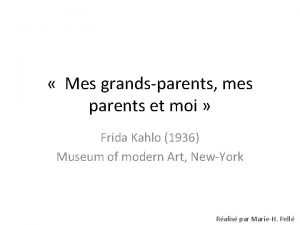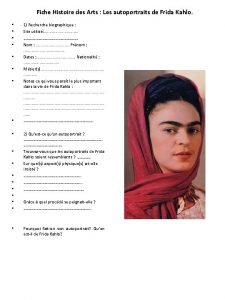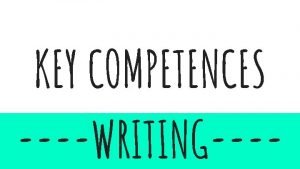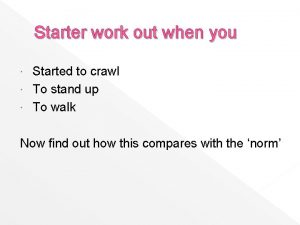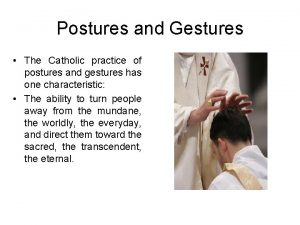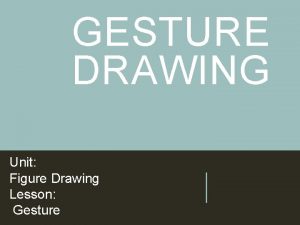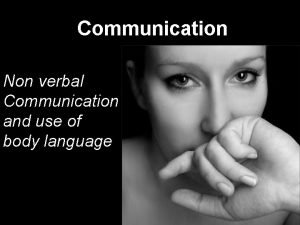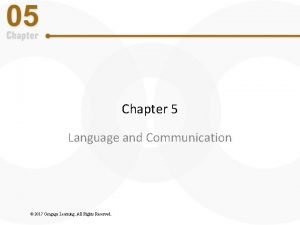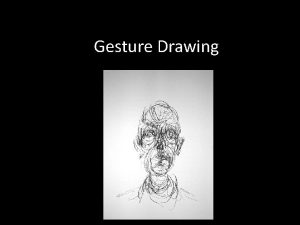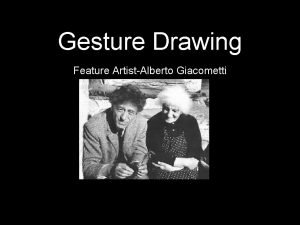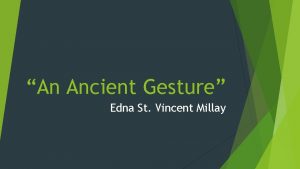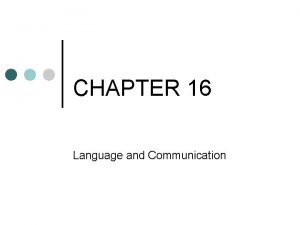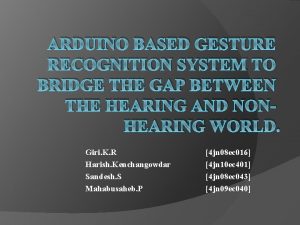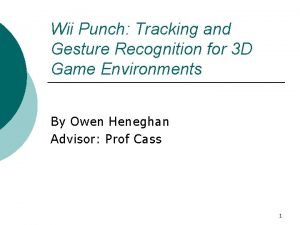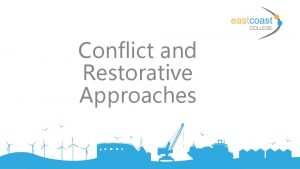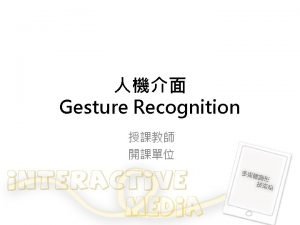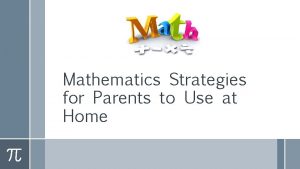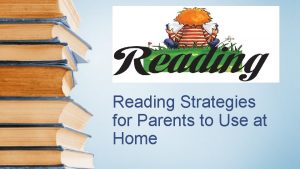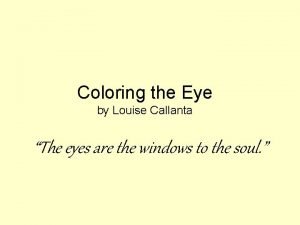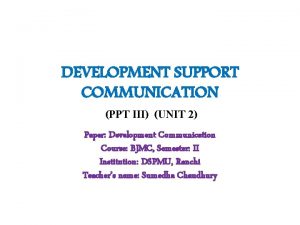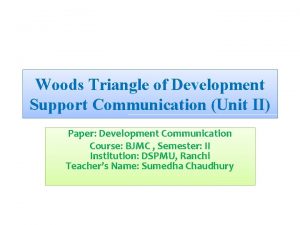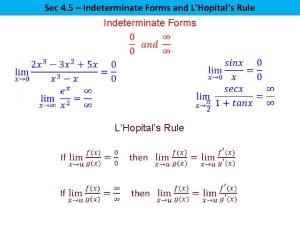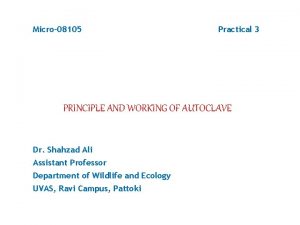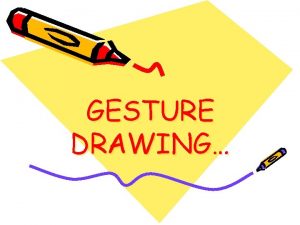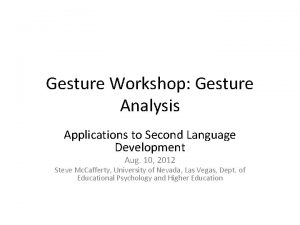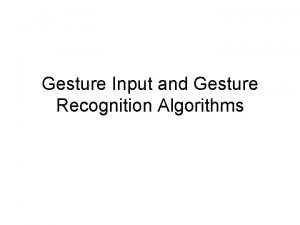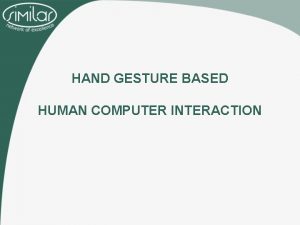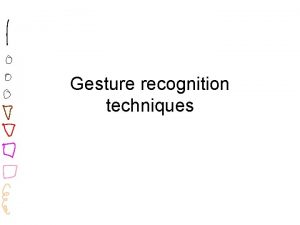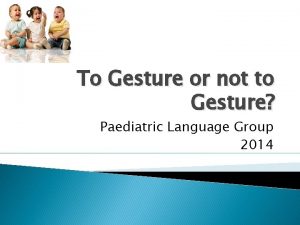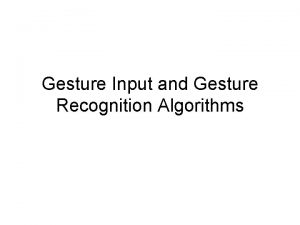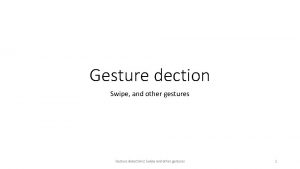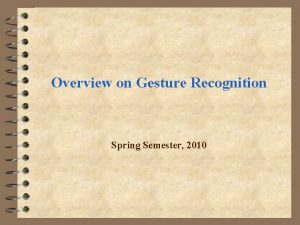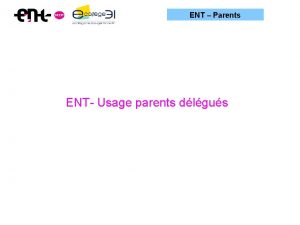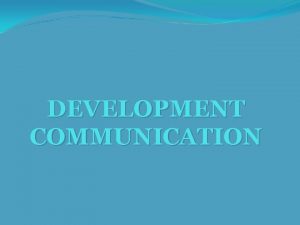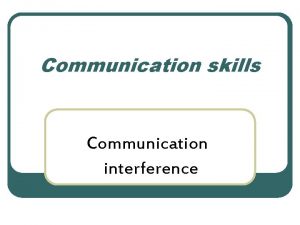HOW PARENTS CAN USE GESTURE TO SUPPORT COMMUNICATION


































- Slides: 34

HOW PARENTS CAN USE GESTURE TO SUPPORT COMMUNICATION AND LEARNING Stephanie Baumann, MS Georgia State University

What is gesture (and why does it matter? )

Think about it… • How would you. . . - give directions to the bathroom? - walk me through what you did this morning? - describe the last movie you saw?

So what is gesture anyway? • Gesture is any hand or body movement that is used to communicate or convey information

So what is gesture anyway? • Gesture is any hand or body movement that is used to communicate or convey information Pointing gestures: Often used to indicate or request an object

So what is gesture anyway? • Gesture is any hand or body movement that is used to communicate or convey information Conventional Gestures: Gestures that have a cultural or universal meaning

So what is gesture anyway? • Gesture is any hand or body movement that is used to communicate or convey information Iconic gestures: Gestures that represent attributes, motion or direction

So what is gesture anyway? • Gesture is any hand or body movement that is used to communicate or convey information Give gestures: Gestures that request something

So what is gesture anyway? • Gesture is any hand or body movement that is used to communicate or convey information Beat gestures: Rhythmic movements to create emphasis or mark separation

But what about baby signs? • NOT a gesture, but is nonverbal communication • Technically considered language

I understand what gesture is, but why do we use it? • To support our speech Boots!

I understand what gesture is, but why do we use it? • To support our speech • To clarify our speech Those!

I understand what gesture is, but why do we use it? • To support our speech • To clarify our speech • To add to our speech Yellow!

But do we really need gesture to understand speech? Not always, but it sure does help!

But do we really need gesture to understand speech? Cartoon Narrative He climbed up there and then, and then she put a ball The, uh, a thing that can That and then it went down here And then he, he rolled And then he went poof


So how do we learn to gesture? • Infants can communicate with gesture as early as 10 months old, beginning with pointing gestures • Children typically refer to an object in gesture about 3 months before they refer to it in speech • Children then combine gesture + speech to start putting words together before using 2+ word phrases + “mommy” (Iverson & Goldin-Meadow, 2005; Özçalışkan & Goldin Meadow, 2005)

Is this pattern the same for all children? Yes and No

Is this pattern the same for all children? • Children with different developmental diagnoses do show differences in gesture production Children with ASD gesture less overall, and often have difficulty with pointing gestures • Children with DS may gesture more, and often use baby signs as a means of communication • Children with SLI may use gesture to compensate for verbal speech difficulties • • However, young children across diagnoses follow a pattern of expressing a label in gesture before using that same word in speech – the timing may just look different!

Do parents matter? YES!

Do parents matter? • When parents translate a child’s gesture, those words are more likely to enter a child’s vocabulary • Parents use a gestural “motherese” to follow their child’s needs • Parents serve as a model of both gesture and speech when children are learning Dimitrova, Özçalışkan, & Adamson, 2016; Iverson et al. , 1999; Özçalışkan & Goldin-Meadow, 2005

Why are gestures important for understanding behavior?

They might be telling us new information • May be presenting information that they don’t have the words for • May be showing signs of frustration, fear or excitement • May be using gesture as a means of interacting with others

They might show a child is ready to learn • Gesture that doesn’t match speech can indicate that a child is beginning to learn a new concept, but isn’t QUITE there yet


They might help with learning • Translating or responding to a child’s gesture may facilitate language learning • Modeling gesture may teach a child language and social skills • Gestures that parents or teachers use may influence a child’s learning


Now that I know why gesture is important, how can I use it to support my child? Important to both listen and WATCH, speak and SHOW

Things you can do Start paying attention to the gestures you are using! • Are you: • Pointing things out to your child, especially if it is something that already has their attention • Using gesture when talking about objects or actions that can help reinforce your point • Using gestures, like head nodding/shaking, that are commonly used in social situations when around your child

Things you can do Start paying attention to what your child is doing with their hands! • Are you: • Giving them the word for things they point to or things they describe through gesture only • Copying their gestures to reinforce the child’s use of gesture

Every child is different Watch and learn from YOUR child what their needs are and what they respond to! • Some children will… • continue to have difficulty understanding gesture • always produce less or more gestures than others • show strengths in certain types of gesture • Use gesture for particular reasons more than others

Most important thing: Watch AND listen

QUESTIONS?

Thank You! My advisor, Dr. Şeyda Özçalişkan The Gesture and Language Lab members and affiliates - Samantha N. Emerson, Lauren J. Stites, Valery M. Limia, Leslie Hodges, and Mindy Reed - for feedback on this project Ga. LEND program for funding
 Tableau frida kahlo mes grand parents mes parents et moi
Tableau frida kahlo mes grand parents mes parents et moi Parents parents
Parents parents Autoritratto con collana di spine
Autoritratto con collana di spine Writing postcard
Writing postcard Catholic hand gesture
Catholic hand gesture Gesture development chart
Gesture development chart Oran posture
Oran posture Gesture drawing lesson
Gesture drawing lesson Gesture exercises
Gesture exercises Gesture brisk erect walk shows
Gesture brisk erect walk shows Gesture-call system
Gesture-call system Honore daumier gesture drawings
Honore daumier gesture drawings Albert giacometti
Albert giacometti What is the ancient gesture
What is the ancient gesture Gesture-call system
Gesture-call system Hand gesture recognition project using arduino
Hand gesture recognition project using arduino Hand gesture punch game
Hand gesture punch game Gesture definition
Gesture definition Meaningful gesture
Meaningful gesture Math strategies for parents to use at home
Math strategies for parents to use at home Reading strategies for parents
Reading strategies for parents Two blue eyed parents brown eyed child
Two blue eyed parents brown eyed child Can 2 blue eyes parents have a brown eyed child
Can 2 blue eyes parents have a brown eyed child Lack of understanding between parents and child
Lack of understanding between parents and child Signal words
Signal words Ladder misuse
Ladder misuse Osha subpart q
Osha subpart q Development communication ppt
Development communication ppt Development support communication examples
Development support communication examples Yesterday
Yesterday When can we use l'hopital's rule
When can we use l'hopital's rule Application of polynomials in daily life
Application of polynomials in daily life Principle of autoclaving
Principle of autoclaving When can we use l'hopital's rule
When can we use l'hopital's rule Pbis
Pbis
